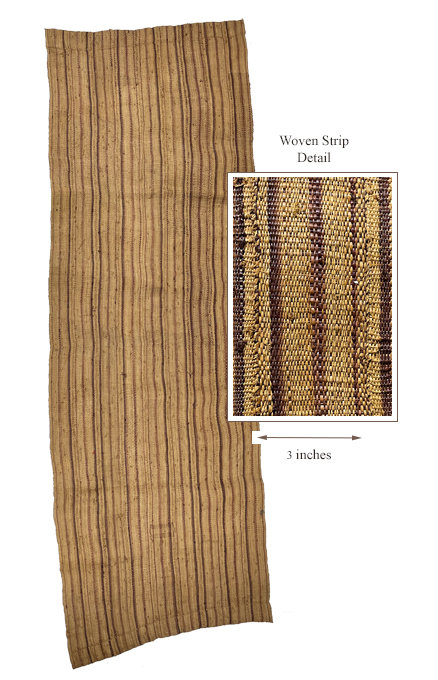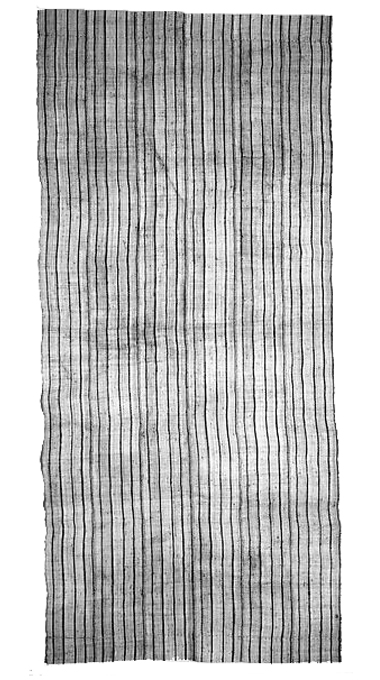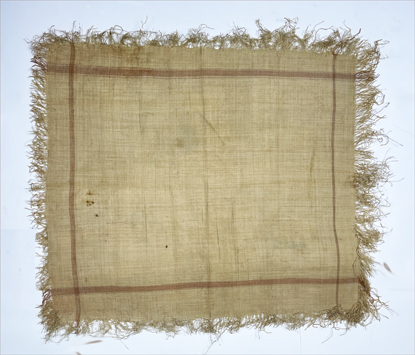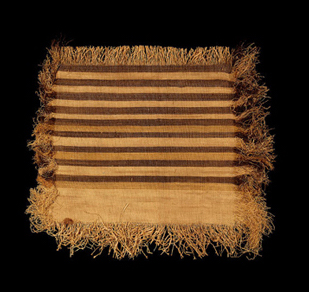Raffia Mat |

Fiber_007093 Rafia Mat Liberia, early 20th century Raffia, Indigo Dye 80 x 27 1/2 in (2 m 3.2 cm x 69.85 cm) collection of Walter Logan Fry |

Liberia, 20th century |
Woven goods, such as cloth strips and fiber mats, were used in parts of Africa as currency. Parties to the transaction used variations in width and the quality of the weave as a means to negotiate value. Cloth was also frequently used in connection with other currencies, such as brass rods, thus lending additional leverage to the negotiation. Cloth or mats of more or less uniform size were used for gifts, peace offerings, payment from a son to his father upon attaining adulthood, and payment upon the birth of a child or the burial of a parent. Cloth currency was also used as a tribute for a spouse who remained faithful or, by contrast, as a penalty for adultery. Source: National Museum of African Art; https://collections.si.edu/search/detail/edanmdm:nmafa_99-13-41 |

Fiber_007094 |
|
A textile from the collection of the National Museum of African Art is given below for comparison. |

Raffia Cloth |